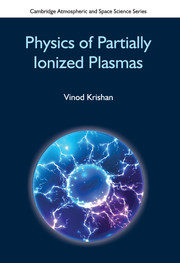Refine listing
Actions for selected content:
17002 results
11 - The Multiple Facets of Correlation Functions
- from Part II - Foundation in Probability and Statistics
-
- Book:
- Data Analysis Techniques for Physical Scientists
- Published online:
- 24 October 2017
- Print publication:
- 05 October 2017, pp 526-576
-
- Chapter
-
- You have access
- Open access
- Export citation
Part III - Simulation Techniques
-
- Book:
- Data Analysis Techniques for Physical Scientists
- Published online:
- 24 October 2017
- Print publication:
- 05 October 2017, pp 641-642
-
- Chapter
-
- You have access
- Open access
- Export citation
3 - Probability Models
- from Part I - Foundation in Probability and Statistics
-
- Book:
- Data Analysis Techniques for Physical Scientists
- Published online:
- 24 October 2017
- Print publication:
- 05 October 2017, pp 88-138
-
- Chapter
-
- You have access
- Open access
- Export citation
8 - Basic Measurements
- from Part II - Foundation in Probability and Statistics
-
- Book:
- Data Analysis Techniques for Physical Scientists
- Published online:
- 24 October 2017
- Print publication:
- 05 October 2017, pp 389-459
-
- Chapter
-
- You have access
- Open access
- Export citation
Other
-
- Book:
- Data Analysis Techniques for Physical Scientists
- Published online:
- 24 October 2017
- Print publication:
- 05 October 2017, pp vi-vi
-
- Chapter
-
- You have access
- Open access
- Export citation
2 - Probability
- from Part I - Foundation in Probability and Statistics
-
- Book:
- Data Analysis Techniques for Physical Scientists
- Published online:
- 24 October 2017
- Print publication:
- 05 October 2017, pp 17-87
-
- Chapter
-
- You have access
- Open access
- Export citation
9 - Event Reconstruction
- from Part II - Foundation in Probability and Statistics
-
- Book:
- Data Analysis Techniques for Physical Scientists
- Published online:
- 24 October 2017
- Print publication:
- 05 October 2017, pp 460-501
-
- Chapter
-
- You have access
- Open access
- Export citation
Dedication
-
- Book:
- Data Analysis Techniques for Physical Scientists
- Published online:
- 24 October 2017
- Print publication:
- 05 October 2017, pp v-v
-
- Chapter
-
- You have access
- Open access
- Export citation
10 - Correlation Functions
- from Part II - Foundation in Probability and Statistics
-
- Book:
- Data Analysis Techniques for Physical Scientists
- Published online:
- 24 October 2017
- Print publication:
- 05 October 2017, pp 502-525
-
- Chapter
-
- You have access
- Open access
- Export citation
7 - Bayesian Inference
- from Part I - Foundation in Probability and Statistics
-
- Book:
- Data Analysis Techniques for Physical Scientists
- Published online:
- 24 October 2017
- Print publication:
- 05 October 2017, pp 284-386
-
- Chapter
-
- You have access
- Open access
- Export citation
Contents
-
- Book:
- Data Analysis Techniques for Physical Scientists
- Published online:
- 24 October 2017
- Print publication:
- 05 October 2017, pp vii-x
-
- Chapter
-
- You have access
- Open access
- Export citation
5 - Classical Inference II: Optimization
- from Part I - Foundation in Probability and Statistics
-
- Book:
- Data Analysis Techniques for Physical Scientists
- Published online:
- 24 October 2017
- Print publication:
- 05 October 2017, pp 178-226
-
- Chapter
-
- You have access
- Open access
- Export citation
Part II - Foundation in Probability and Statistics
-
- Book:
- Data Analysis Techniques for Physical Scientists
- Published online:
- 24 October 2017
- Print publication:
- 05 October 2017, pp 387-388
-
- Chapter
-
- You have access
- Open access
- Export citation
Preface
-
- Book:
- Data Analysis Techniques for Physical Scientists
- Published online:
- 24 October 2017
- Print publication:
- 05 October 2017, pp xi-xii
-
- Chapter
-
- You have access
- Open access
- Export citation
1 - The Scientific Method
-
- Book:
- Data Analysis Techniques for Physical Scientists
- Published online:
- 24 October 2017
- Print publication:
- 05 October 2017, pp 1-14
-
- Chapter
-
- You have access
- Open access
- Export citation
12 - Data Correction Methods
- from Part II - Foundation in Probability and Statistics
-
- Book:
- Data Analysis Techniques for Physical Scientists
- Published online:
- 24 October 2017
- Print publication:
- 05 October 2017, pp 577-640
-
- Chapter
-
- You have access
- Open access
- Export citation
13 - Monte Carlo Met
- from Part III - Simulation Techniques
-
- Book:
- Data Analysis Techniques for Physical Scientists
- Published online:
- 24 October 2017
- Print publication:
- 05 October 2017, pp 643-662
-
- Chapter
-
- You have access
- Open access
- Export citation
6 - Classical Inference III: Confidence Intervals and Statistical Tests
- from Part I - Foundation in Probability and Statistics
-
- Book:
- Data Analysis Techniques for Physical Scientists
- Published online:
- 24 October 2017
- Print publication:
- 05 October 2017, pp 227-283
-
- Chapter
-
- You have access
- Open access
- Export citation
4 - Classical Inference I: Estimators
- from Part I - Foundation in Probability and Statistics
-
- Book:
- Data Analysis Techniques for Physical Scientists
- Published online:
- 24 October 2017
- Print publication:
- 05 October 2017, pp 139-177
-
- Chapter
-
- You have access
- Open access
- Export citation

Physics of Partially Ionized Plasmas
-
- Published online:
- 13 September 2017
- Print publication:
- 09 May 2016
